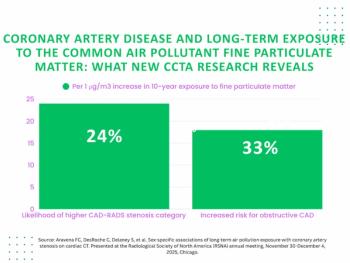
Contrast MRI For Perforated Appendix in Children
Use of contrast enhanced MRI in diagnosing children with a perforated appendix.
Contrast-enhanced MRI helps differentiate between perforated and non-perforated appendicitis among children, according to a study published in
Researchers from New York-Presbyterian Hospital/Weill Cornell Medicine performed a retrospective review of 77 patients (mean age 12.2) to assess the performance of MRI in differentiating perforated from non-perforated appendicitis.
The researchers reviewed the records of the pediatric patients who had undergone contrast-enhanced MRI and subsequent appendectomy, with surgicopathological confirmation of perforation. Appendiceal diameter and the following 10 MRI findings were assessed:
• Appendiceal restricted diffusion
• Wall defect
• Appendicolith
• Periappendiceal free fluid
• Remote free fluid
• Restricted diffusion within free fluid
• Abscess
• Peritoneal enhancement
• Ileocecal wall thickening
• Ileus
The results showed that of the 77 patients, 22 had perforation. These 22 patients had a larger mean appendiceal diameter or 12.3 mm and mean number of MRI findings (5.0) than the non-perforated group, which had a mean appendiceal diameter of 8.6 mm and a mean of 2.0 MRI findings.
Abscess, wall defect and restricted diffusion within free fluid had the greatest specificity for perforation (1.00, 1.00, and 0.96, respectively) but low sensitivity (0.36, 0.25, and 0.32, respectively). The receiver operator characteristic curve for total number of MRI findings had an area under the curve of 0.92, with an optimal threshold of 3.5. A threshold of any four findings had the best ability to accurately discriminate between perforated and non-perforated cases, with a sensitivity of 82% and specificity of 85%.
The researchers concluded that use of contrast-enhanced MRI can help differentiate perforated from non-perforated appendicitis. The presence of multiple findings increases diagnostic accuracy, with a threshold of any four findings optimally discriminating between perforated and non-perforated cases.
Newsletter
Stay at the forefront of radiology with the Diagnostic Imaging newsletter, delivering the latest news, clinical insights, and imaging advancements for today’s radiologists.




























